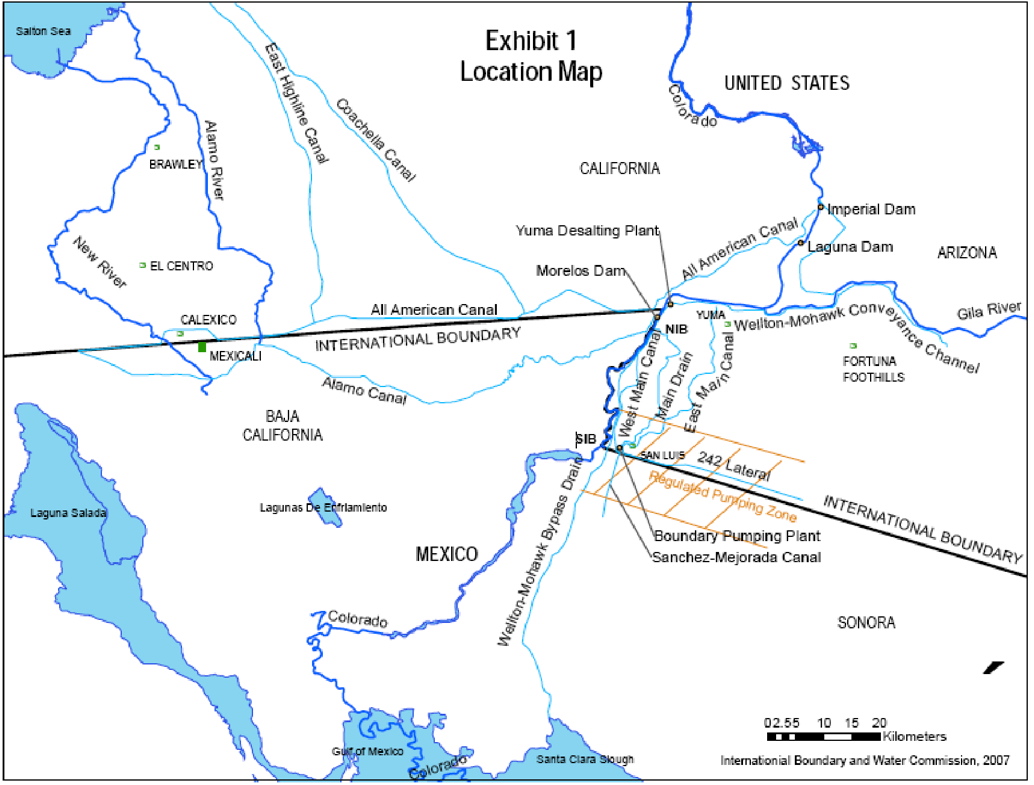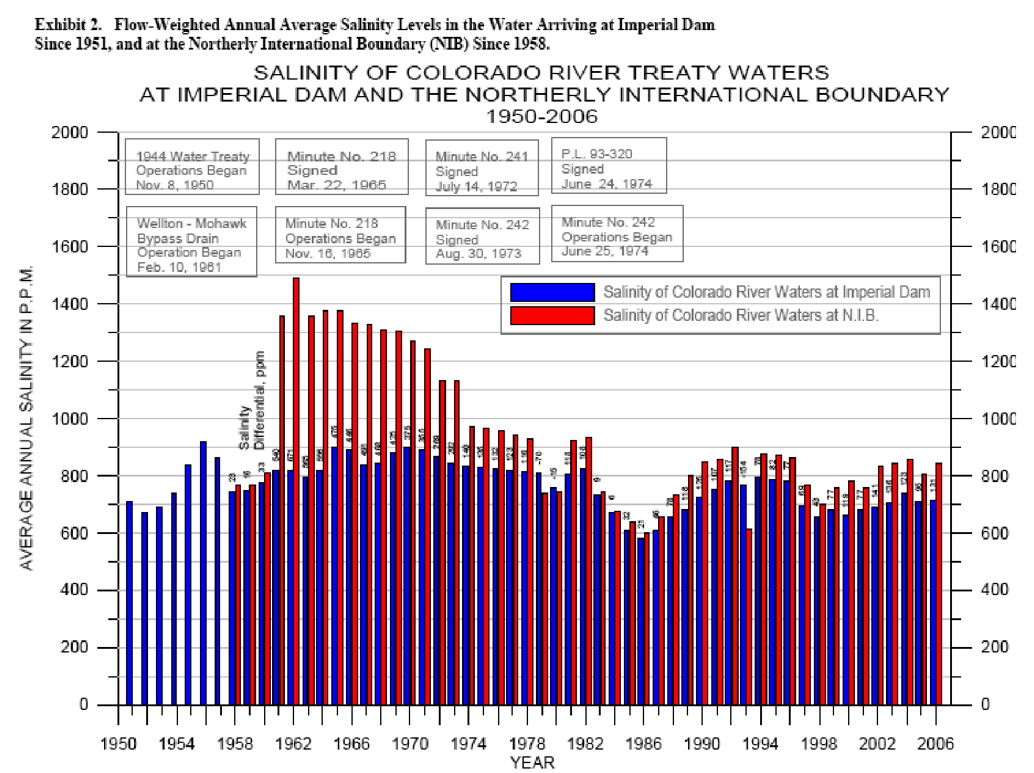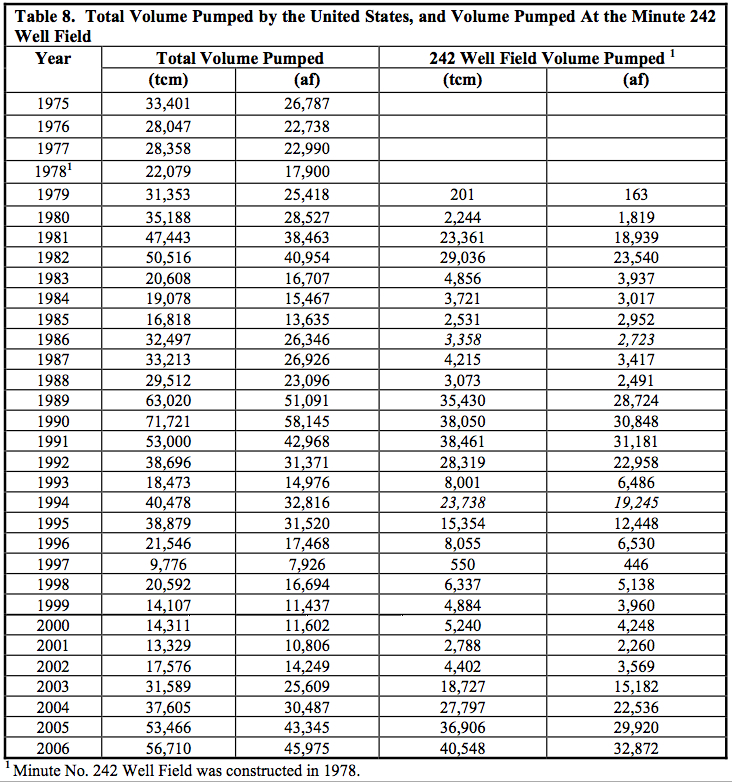
|
International Cooperation
Canada- US Water Trade ConsiderationsThe idea of importing Canadian water resources to relieve the pressure of water scarcity in the western United States does not support our main goal of inducing water conservation at both a consumer and corporate level. Such a measure would simply act as a temporary solution to the water scarcity problem and it could result in environmental damage. If the amount of water is reduced in Canada, it will affect the flow regime, including rates of sedimentation and deposition, changes in water temperature, and water quality (Government of Newfoundland and Labrador, 2001 p.6). In accordance with this idea, an amendment should be added to NAFTA, explicitly prohibiting the importation of bulk water from Canada. This will ensure that the Canadian ecosystem is not affected in an adverse way in attempting to supply more water to other countries. Refusing to import bulk water from Canada will result in higher water value and the promotion of conservative water usage by emphasizing the scarcity of water in the United States. Mexican Water Debt due to extraordinary droughtAlthough the Mexican water debt has been paid, the Rio Grande drought remains, and preventive measures are essential to guarantee water availability for both countries. Since most of the water used from the Rio Grande is used for irrigation, irrigation systems should be improved in both sides of the river, in order to save as much water as possible. For the United States irrigation districts, several measures will take place in order to improve irrigation, such as sales tax exemptions and rebates for the new technology. For the Mexican irrigation districts, SAGARPA (Secretaria de Agricultura, Ganaderia, Desarrollo Rural, Pesca y Alimentacion), along with the IWBC should be in charge of encouraging farmers to invest on improving their irrigation systems, and the North American Development Bank, as was done during the time of debt, should fund irrigation system improvements, especially for those farms unable to achieve that investment. Also, a policy should be implemented, such that all farms only incorporate effective irrigation systems, with financial aid from the NADB as necessary. Water Quality along the Colorado River Lower BasinSince there is a limit to water pumped for Mexico, and salinity concentrations in water are increasing, there exists a risk of reaching a point in which more clean water is needed than that available from groundwater. In order to reduce dependence on groundwater, the Yuma desalting plant should be re-started and once again become a source of clean Colorado River water for the Morelos Dam. The plant's high energy costs will be decreased by incorporating Solar ponds and wind turbines, as they would not disturb very large population. As of October 2008, Arizona, Nevada, and California have entered negotiations and decided to split the plant's first year costs. Additionally, the plant's estimated 10 billion gallons of annually desalinated water would be split to the three states (McKinnon, 2008). However, California's share of the freshwater can enter back into the Colorado River for Mexico, ending the reliance on groundwater. Alongside the implementation of solutions to the increasing salinity level problem, preventive measures should be taken, focusing on the cause of the salinity. Since about 37% of the salt concentration in the Colorado River Basin is attributed to irrigation runoff, salinity control measures should be implemented in nearly all farms by improving water delivery systems and water management practices. Many organizations, such as the USDA, the US Bureau of Reclamation and the US Bureau of Land Management, are funding these types of projects, but only in some irrigation districts and farms. In order to preserve the Colorado River waters, they should be implemented in all irrigation districts, and nearly all farms. The irrigation technology improvements of the federally-developed irrigation projects must be provided by federal funds. The rest of the irrigated lands that ultimately affect the Colorado River waters must also improve their irrigation technology and be funded by either federal, state, private organizations or Cap and Trade system funds. Some of the agencies and organizations that may provide this funding are: United States Environmental Protection Agency, United States Department of Agriculture, Lower Colorado River Basin Development Fund, Upper Colorado River Basin Development Fund, Colorado River Basin Salinity Control Forum, the North American Water Trading Authority and International Boundary Water Commission. In order to assign these funds, first, the United States Department of Agriculture must submit a report about the irrigation technology status of all the farms in the irrigation districts that benefit from Imperial Dam and provide it to the different organizations. Afterwards, a meeting should be scheduled between the organizations to analyze the cost of the new systems and each organizations' available funds in order to divide the costs. Finally, to assure a long-term quality water delivery from the United States to Mexico, the Cap and Trade System profits should also fund research about salinity control methods and their effectiveness on the Colorado River Delta. |

|



